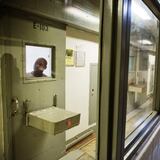GHSF Daily is expanding its Four Questions feature this season beyond head coaches to other voices in high school football. Today's interviewee is Bush Enos, football photographer for Walton
Bush Enos, Walton photographer
1. How did you get started as a sports photographer, and at Walton in particular? "I got interested in photography at a very early age as my uncle was a professional photographer and taught me lighting and black-and-white processing. In college, I was responsible for the newspaper and yearbook photos. I started my own wedding photography business, which sustained me for over 35 years. When my son attended Walton, he ran cross country and track, which I was always shooting for the school and parents. My son had friends on the football team, and I spent my Friday nights photographing them as well. Since there were more participants in football than any other sport, football was more lucrative, but I enjoyed photographing all sports. Sports photography was way less stressful than weddings. Over the years, I have covered many professional and college sports teams, but I kept coming back to the high school level as it was more enjoyable."
2. What tips would you give someone wanting to learn about shooting football games? "Sports photography has a very large learning curve. There is the question of which cameras and lenses to use. Football requires fast cameras and fast lenses. Most photographers have lenses that can record action in low light with a camera that operates at a high frame or capture rate of about 10-14 frames per second. Most football is recorded at 1/1000 or higher shutter. Most football is shot from a distance requiring telephoto lenses in the range of 300mm all the way to 800mm. These lenses must operate in low light with apertures of f2.8 thru f5.6 to record at fast shutter speeds in most types of lighting. Many photographers also carry a medium telephoto or zoom lens and a wider-angle lens for action closer to where they are standing."
3. Aside from the technical knowledge, what makes a good sports photographer? "You must have a thorough knowledge of the sport you are shooting. With that knowledge, you know better where to place yourself for optimal results. Every sport is totally different in where a photographer places oneself. With football, you want to be as close to the action as possible. You must do this with respect to the coaches and players so as not to interfere with the game. And the closer your lenses allow you, the closer your photos will appear in the final result. Lots of times a good football photograph is just a matter of being in the right place at the right time. But like anything else, it takes many hours of practice and knowledge of the game. For example, in football, if a team is at third down and a long way to go for a first down, the photographer has to know that it is more likely going to be a passing play, so he should place him downfield from the line of scrimmage to grab the shot of the receiver and defensive player going up for the catch or deflection. You also must stay alert at all times to the action on the field as not to be in the wrong place at the wrong time. Referees will bowl you over in a heartbeat. Never turn your back on the action as it can be on top of you in seconds, resulting in a serious injury to yourself and your equipment. I once had my big toe stepped on by a nice set of cleats as I couldn't get out of the way of a player fast enough as there were people blocking my exit backwards. It took a year and a half to grow that toenail back. Might go to steel-toed work shoes."
4. Are some venues more fun than others, or are all football fields the same for photographers? "As with any sport, playing fields are as different as night and day. Surfaces vary, such as their ability to drain rain water. I have come home from rain games where my wife wouldn't even let me in the garage for the mud. And she is sick of vacuuming up the little black rubber cushioning beads that are embedded in artificial turf that get caught in your cuffs and shoes. But to a photographer of football, the lighting is the key element. And lighting from one field to another is like night and day. Some schools have updated their lighting for night games and many haven't. Some end zones are as dark as your closet with the door cracked. When a player scores a touchdown on some fields, he has raccoon eyes, as we call it -- dark, hard shadows around his eyes from the poor lighting. Sometimes adding a flash helps, but it is distracting at night. Many football fields vary in size from the end zone to the stadium seats, which doesn't allow much space for escaping from a 200-pound receiver who just caught a Hail Mary. Some fields have the same spacing problem with the sidelines and the stadium seating distance as well. But all in all, photographing high school football is very rewarding and lots of fun to keep the body moving instead of hugging the couch on Friday nights."
Produced by Georgia High School Football Daily, a free e-mail newsletter. To join the mailing list, click here.
About the Author

